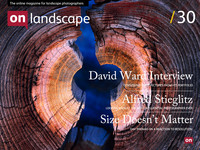Featured photographer

Tim Parkin
Tim Parkin is a British landscape photographer, writer, and editor best known as the co-founder of On Landscape magazine, where he explores the art and practice of photographing the natural world. His work is thoughtful and carefully crafted, often focusing on subtle details and quiet moments in the landscape rather than dramatic vistas. Alongside his photography and writing, he co-founded the Natural Landscape Photography Awards, serves as a judge for other international competitions. Through all these projects, Parkin has become a respected and influential voice in contemporary landscape photography.
This week sees a feature on Hugh Webster - originally born in Northumberland but having spent most of his life in Scotland, Hugh has his own stock photo library which used to be called the Scottish Highland Photo Library but is now Stock Scotland and previously ran the Highlands Development Photo Library.
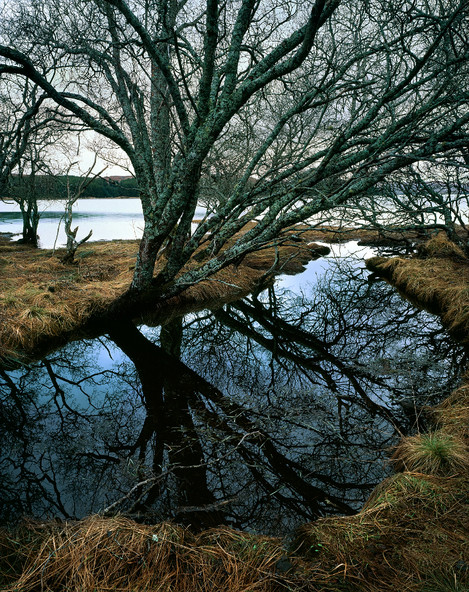 In most photographers lives there are 'epiphanic’ moments where things become clear, or new directions are formed. What were your two main moments and how did they change your photography?
In most photographers lives there are 'epiphanic’ moments where things become clear, or new directions are formed. What were your two main moments and how did they change your photography?
I am sorry to say that I haven’t had any moments of epiphany as yet but I keep on hoping. I’ve had moments of apparent clarity in which the future, photographically speaking, seemed to open up before me but they have proved to be untrustworthy. I am a pretty stubborn type so I think the answer for me is just to keep on working. Perhaps the closest I’ve come to a moment of revelation was when, just before my university finals, I realised that I could try to make photography my career. Up until that point I’d had no idea what I wanted to do. My father, who was a keen amateur photographer, must have bought me a camera at an early age because I can’t recall a time when I didn’t take photographs. It’s strange, then, that it never occurred to me before that I could make it my living. It seemed such a normal activity that I think I must have just taken it for granted and not noticed how important it was to me.
If I can turn the question around a little, I’ve often had periods of doubt about my choice of photography as a career. There have been sometimes quite long periods of what I call, borrowing from Winston Churchill, photographic ‘black dog’. Periods when I have just found myself going through the motions of producing pretty pictures for my calendars, postcards and stock agency and occasionally wishing I’d chosen another career. These phases have always passed, though, and it may be that they just reflect my temperament rather than anything more profound.
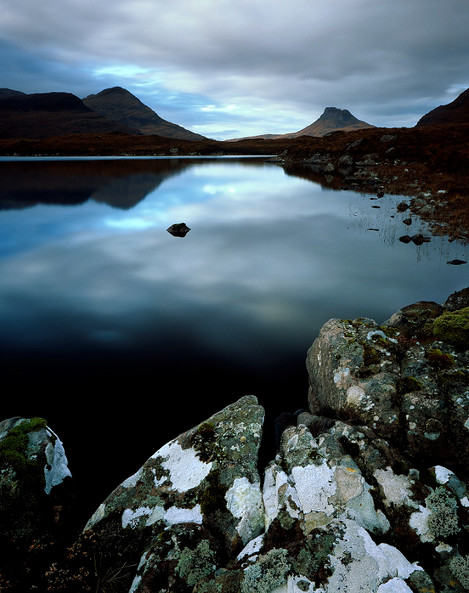 Discovering the slow practice of large format photography was a great help during a particularly extended period of ‘photographic doubt’. Latterly I’ve made some alterations to the way I run my business so that I can spend more time on more personal projects. This practice of setting projects and developing themes through my photography is something I’ve come to quite recently and it has changed the pictures I take and re-invigorated my love for the medium. It’s early days and I don’t have a great deal to show for it yet but I am looking forward to the future. I’ll still be taking the ‘pretty pictures’ though - I have bills to pay and sadly ‘themed projects’, however interesting, don’t tend to pay them.
Discovering the slow practice of large format photography was a great help during a particularly extended period of ‘photographic doubt’. Latterly I’ve made some alterations to the way I run my business so that I can spend more time on more personal projects. This practice of setting projects and developing themes through my photography is something I’ve come to quite recently and it has changed the pictures I take and re-invigorated my love for the medium. It’s early days and I don’t have a great deal to show for it yet but I am looking forward to the future. I’ll still be taking the ‘pretty pictures’ though - I have bills to pay and sadly ‘themed projects’, however interesting, don’t tend to pay them.
Why landscape photography?
That’s simultaneously a simple and a complex question to answer. Like many photographers, my initial love for the landscape grew out of a love of place. I was a lucky child: my parents both loved the West Coast of Scotland and most of our family holidays were spent there. Every year from about the ages of four to twelve we would spend the whole summer, six or seven weeks, renting a cottage in the remote village of Arnisdale by Glenelg. For me, it was like being allowed to visit Eden for a few weeks a year and this experience is almost certainly the reason that landscape photography has become so important in my life.
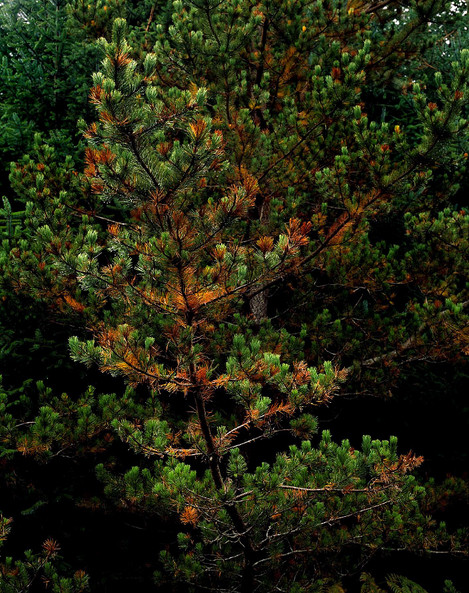 Notwithstanding my earlier remarks about photographic ‘black dog’, the landscape has only grown in importance to me as I’ve got older. However, over time the relationship has become more complex. The initial innocent, joyous and unmediated response to the landscape has been changed by life experience, ideas, history and politics into something more ambivalent, less comfortable or comforting. I can’t regret this as I think it’s absolutely inevitable and I think that this inexorable process will enable me to take more satisfying photographs. I hope this doesn’t make me sound like a gloomy and depressive old landscape photographer because nothing could be further from the truth. Those wonderful moments of sheer unadulterated pleasure in the light and the land occur almost every time I take my camera out for a walk. Also, I am not all that old!
Notwithstanding my earlier remarks about photographic ‘black dog’, the landscape has only grown in importance to me as I’ve got older. However, over time the relationship has become more complex. The initial innocent, joyous and unmediated response to the landscape has been changed by life experience, ideas, history and politics into something more ambivalent, less comfortable or comforting. I can’t regret this as I think it’s absolutely inevitable and I think that this inexorable process will enable me to take more satisfying photographs. I hope this doesn’t make me sound like a gloomy and depressive old landscape photographer because nothing could be further from the truth. Those wonderful moments of sheer unadulterated pleasure in the light and the land occur almost every time I take my camera out for a walk. Also, I am not all that old!
TS Elliot insisted that a poem should be able to communicate before it is understood and this is the way that I approach my landscape photography. The immediate shared aesthetic pleasure of a picture is the vital element and this comes, principally, from relatively immediate experience. The deeper content of the picture comes from elsewhere and, although very important, is more difficult to read. It often requires a little help from the photographer to be understood. I believe that it’s the desire to share experience that draws people to landscape photography - it’s what really counts. I want to share my experience of the landscape with others. Solipsistically taking pictures for myself would be just a waste of time.
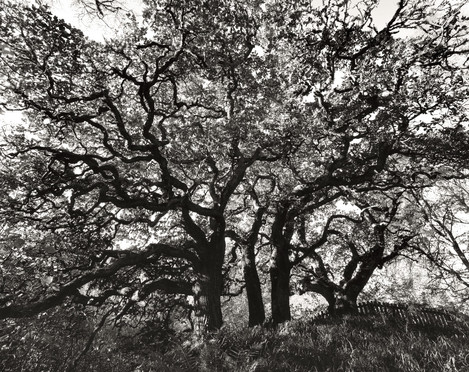 Could you tell us a little about the cameras and lenses you typically take on a trip and how they affect your photography
Could you tell us a little about the cameras and lenses you typically take on a trip and how they affect your photography
It depends what I am working on. If I am photographing for my retail calendars, postcards etc. I generally use a Canon 5dII and a 24-105mm lens. If I am photographing for personal projects or for my planned gallery and associated prints then I use an Arca F-metric for short carries or a little Ebony 54 for longer carries. I also have a Ebony 5x7 and a Fuji 617 kit but these get less frequent use. I am starting to look seriously at medium format digital.
Do you have any particular workflow post capture?
When I am using film I try to do as much correction as possible at the scanning stage ( I use a Hasselblad Flextight scanner). Once scanned I tend to set dark and light points using a ‘threshold’ layer which often has the added advantage of removing any unwanted casts. I’ll then use a combination of the ‘shadow/highlight’, ‘selective colour’, ‘curves’ and dodging and burning controls. As a general rule, I try to do as little as possible. I’ll draw a veil over my digital workflow as it’s something I am well aware I haven’t really mastered yet.
I’d like to mention five books that I’ve kept on coming back to over the years for pleasure and inspiration. The first is, in my opinion, the best photo book ever published. Paul Strand’s ‘Tir A’ Mhurain - The Outer Hebrides of Scotland’ combines open landscape, landscape detail and wonderfully sensitive portraiture to get as close to photo-book perfection as I’ve yet seen. My second, third, fourth and fifth selections in no particular order would be: John Davies book ‘The British Landscape’ where he photographs fells, terraced houses, motorways, mountains, railway sidings and bowling greens all in the same majestic light; Fay Godwin and Ted Hughes collaboration Elemet which is the most successful combination of my two favourite art forms that I know of; Gus Wylie’s book ‘The Hebrideans”, another book about the Hebrides and surely inspired by Paul Strand; finally Joel Meyerowitz ‘Cape Light’ for its calm refreshing beauty.
Also, is it just me or are people unwilling to mention names like Ansel Adams and Edward Weston any more? They seem to have slipped out of fashion.
Tell me what your favourite two or three photographs are and a little bit about them.
a. ‘This is not a sunset. A bomb hits An Garbh-eilean’.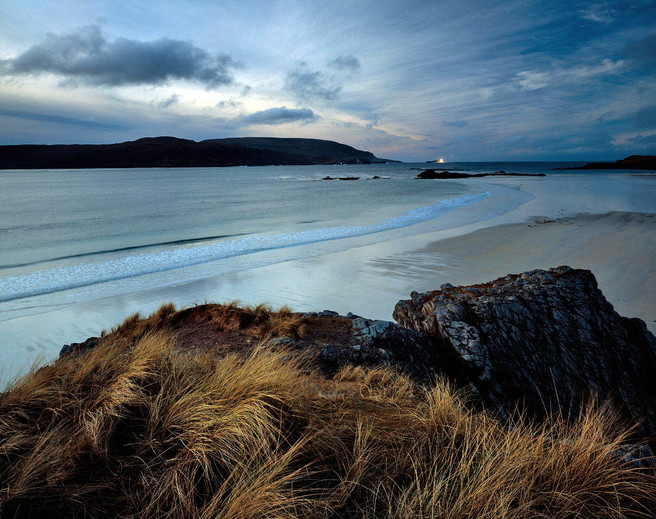
I was photographing at Balnakeil Bay in North West Sutherland when I took this photograph. The jets had been around for most of this rather sombre winter afternoon but hidden from view by a lid of thin grey cloud. There was a sudden huge sound which rolled around the bay and I turned to see a ball of fire rising over An Garbh-eilean, a rocky stack just off the North coast of Sutherland. I hastily collected my kit together and hurried up onto the top of a promontory that juts out into the beach in the hope that if they dropped another bomb I’d be able to record it. The resulting picture is one that I find uncomfortable viewing as it seems to make explicit, in perhaps an extreme way, the hidden ambiguities that are often concealed in landscape photographs. In this case the incongruity of beauty and violence.
My daughter asked me if the picture was a sunset, hence the title. An Garbh-eilean is the only live aerial bombing range in Britain.
b. St. Mirren’s Graveyard and Birches, Strath Brora.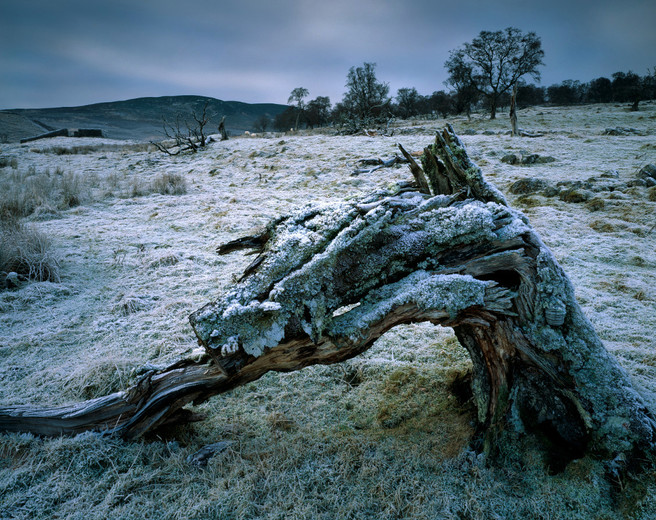
This landscape hasn’t always been so quiet. There used to be a lot more people living here and I suspect that the land was better for it. This is Strath Brora in East Sutherland, an area that suffered significant de-population during the infamous Highland Clearances. The structure at the upper right is St. Mirren’s Graveyard. There are the remains of many cottages and much older habitations visible in the Strath but few people live here now. It’s a subtly beautiful and poignant place.
c. Rock formations by Loch nan Uamh, Morar.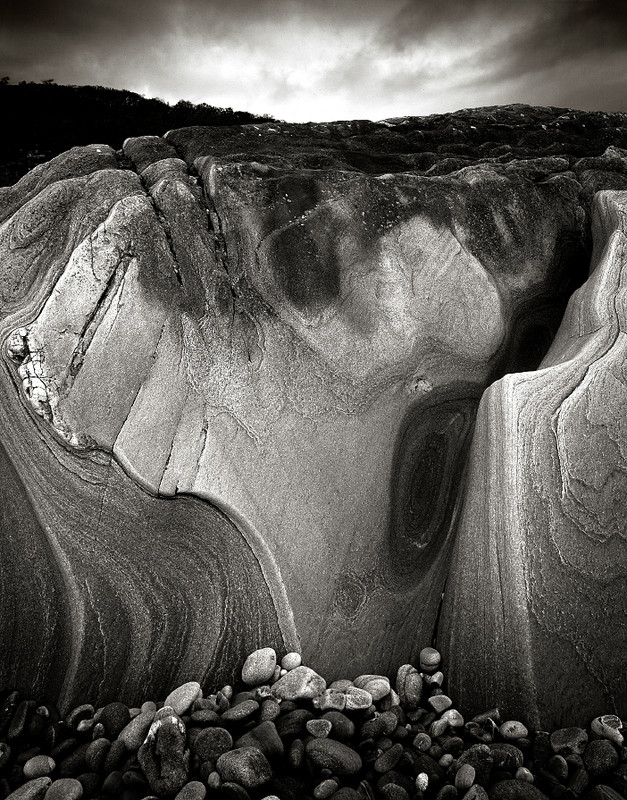
This photograph is of one of the many fascinating rock formations by Loch nan Uamh in Morar on the road to Mallaig. According to my geological map, they are part of the ‘Morar Group’ of Neoproterozoic rocks and are about a billion years old. They weather to form beautiful and sometimes dramatic shapes exhibiting a range of fine and course textured layers almost suggestive of the grain of wood but far older, harder and colder. I particularly like the way the large sea-worn pebbles in the foreground have been washed up to the base of the flattened ‘mushroom’ of projecting rock. For some reason, I get a very particular sense of the dynamic nature of the landscape from this picture. Perhaps it’s because the plane of rock is shaped like an arrested explosion (another explosion!).
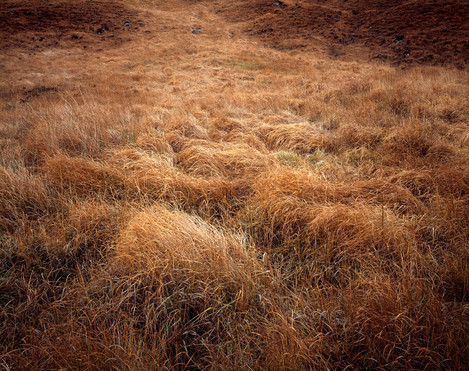 Where do you think you are going with your photography?
Where do you think you are going with your photography?
I will, of course, be continuing to photograph for my retail calendars and cards. But I am happy to say that with regard to personal work I believe my road ahead is reasonably clear (for the first time in a long time). I’ll be sticking with landscape but I want to take more understated pictures that make use of a more subdued colour palette than I’ve been accustomed to using. Pictures which whilst emphasising immediate aesthetic appeal also attend to the importance of deeper content.
I want to work more on themed projects rather than taking so many random individual landscapes. For example, I am starting this year on what I hope will be a large project for me tentatively called ‘The Big Space’. Its subject is the area that I live on the edge of and which is probably the world’s largest blanket bog, the huge ‘empty’ area of central Sutherland and Caithness which includes the famous Flow Country. It’s the least densely populated area in Europe and although it is usually ignored or avoided by tourists it is a remarkable place and a real landscape of the imagination.
 I am working on a project called ‘The Fading Landscape’ which is about the dwindling signs of the past peoples of the landscape I live in. This part of the world is crowded with the remains of ancient people, with the crumbling squares of roughly cut stones that once were the cottages of those forced to move to the coast or beyond during the Highland Clearances and with signs of the much more recent departures caused by economic hardship and agricultural change.
I am working on a project called ‘The Fading Landscape’ which is about the dwindling signs of the past peoples of the landscape I live in. This part of the world is crowded with the remains of ancient people, with the crumbling squares of roughly cut stones that once were the cottages of those forced to move to the coast or beyond during the Highland Clearances and with signs of the much more recent departures caused by economic hardship and agricultural change.
I am also planning a smaller and more intimate portrait of rather unusual oak wood in East Sutherland and I have an idea for a more light hearted project which I am keeping under wraps for now.
 Which photographer would I like to see interviewed?
Which photographer would I like to see interviewed?
How about Gus Wylie. A lot of his work is portraiture but the portraits are always tied to a particular landscape.
Or what about David Robertson for an informed perspective on shooting stock in the ‘download age’ or perhaps I should say the ‘sharing’ (read thieving) age.

